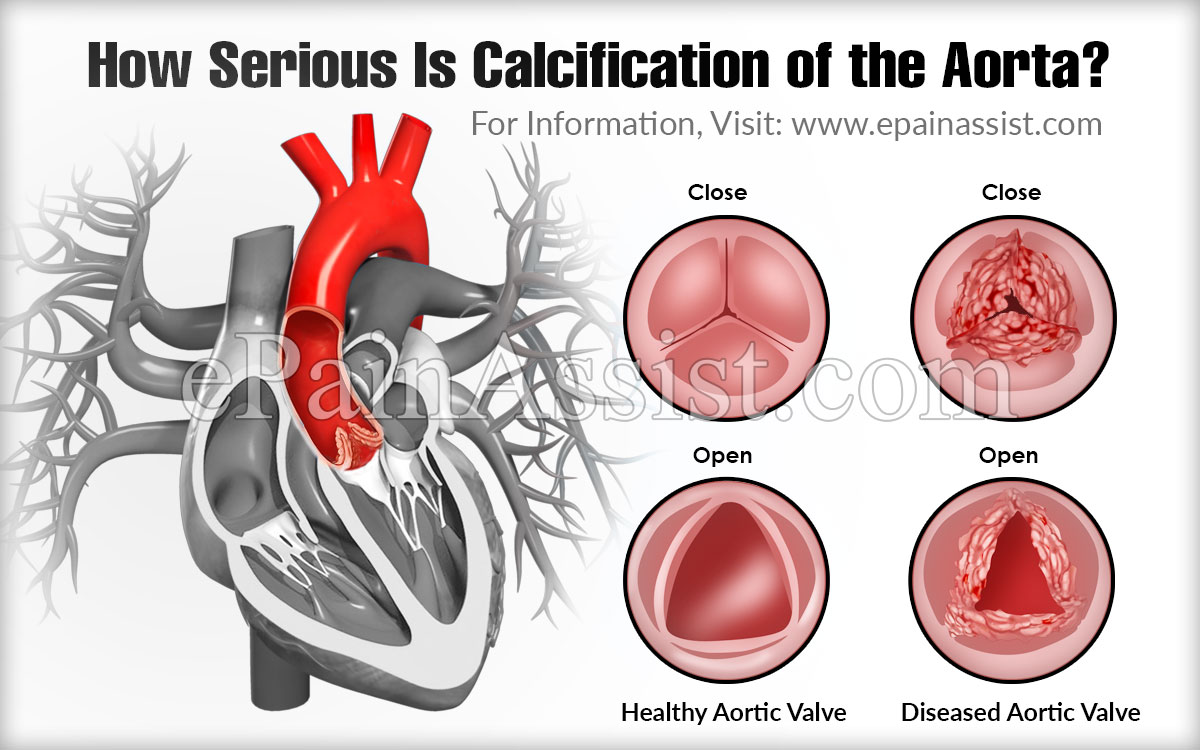Calcification of aorta occurs when the aortic valve gets blocked due to calcium deposition. This condition can be quite as gradual deposition narrows down the opening of the valve in the heart, which may limit the proper flow of blood through the valve of the aorta. Such a condition is called stenosis of aortic valve which blocks the blood circulation throughout the body.

How is Calcification Of Aorta Caused?
Calcification of aorta usually occurs among the elderly. Yet, it can be seen to occur among younger individuals too. Few of the etiological factors include-
Disruption of Osteocalcin: In a normal human being, a protein called Osteocalcin is essentially responsible for carrying the calcium in and out of the patient’s heart, in the body. In a patient with aortic calcification, the function of this osteocalcin is somehow disrupted which eventually leads to deposition of calcium in the aortic valve of the heart.
Congenital: Sometimes, aortic calcification can be congenital commonly occurring due to some form of birth defects.
Cholesterol and High B.P: High cholesterol and blood pressure often may lead to deposition of plaque and calcium in the valve of aorta thereby leading to calcification.
What are the Complications of Calcification of Aorta?
Calcification of aorta can have serious complications related to it. The patient should be aware of the following issues-
- The very first complication of aortic calcification is having a risk of aortic valve stenosis. It blocks the valve due to calcium deposition thereby affecting the flow of blood throughout the body.
- Due to narrowing down and blockage of the aortic valve, a patient may become prone to heart failure due to improper blood flow.
- The risk of blood clots increases with the calcification of aorta as the blood cannot easily pass through the valves.
- The patient becomes an easy prey of stroke because the flow of blood throughout the body is not uniform.
- Internal bleeding may cause due to deposition of calcium in the aortic valve.
- The heart of the patient may go through rhythm abnormalities caused due to improper blood circulation.
- The patient may become prone to various diseases that have adverse effects on the heart like endocarditis.
- Lastly, it should be remembered that poor blood circulation is a fatal condition which can lead to sudden death.
How to Manage The Condition of Calcification of Aorta?
There are major two ways of managing and treating the problem of aortic calcification. They include-
Dietary Changes- It is important to bring about certain changes in the daily intake of food. A balanced diet involving fruits and vegetables reduces the risk of aortic calcification. Fruits and vegetables clean up the patient’s bodily systems thereby reducing the deposition of plague in the blood vessels. The patient should eat food, which is known to be low in saturated fat and cholesterol in order to reduce the risks of calcification. Smoking and consumption of alcohol should be particularly cut down.
Lifestyle Changes- Lifestyle changes are equally important along with dietary changes. The patient should exercise regularly to keep oneself active. Moderate intensity of exercise is recommended to reduce and manage the risk of calcification of aorta. Any form of exercise like jogging, brisk walking, aerobics may work. Even playing a sport is counted as a form of exercise. It is important to check with the doctor before starting any exercise.
- American Heart Association – Heart Valve Problems and Disease: https://www.heart.org/en/health-topics/heart-valve-problems-and-disease
- Mayo Clinic – Aortic Valve Stenosis: https://www.mayoclinic.org/diseases-conditions/aortic-valve-stenosis/symptoms-causes/syc-20353139
- Circulation Research Journal – Aortic Valve Calcification: Basic Science to Clinical Practice: https://www.ahajournals.org/doi/full/10.1161/CIRCRESAHA.116.303851
- Cleveland Clinic – Aortic Valve Disease: https://my.clevelandclinic.org/health/diseases/17528-aortic-valve-disease
- National Heart, Lung, and Blood Institute (NHLBI) – Heart Valve Disease: https://www.nhlbi.nih.gov/health-topics/heart-valve-disease
